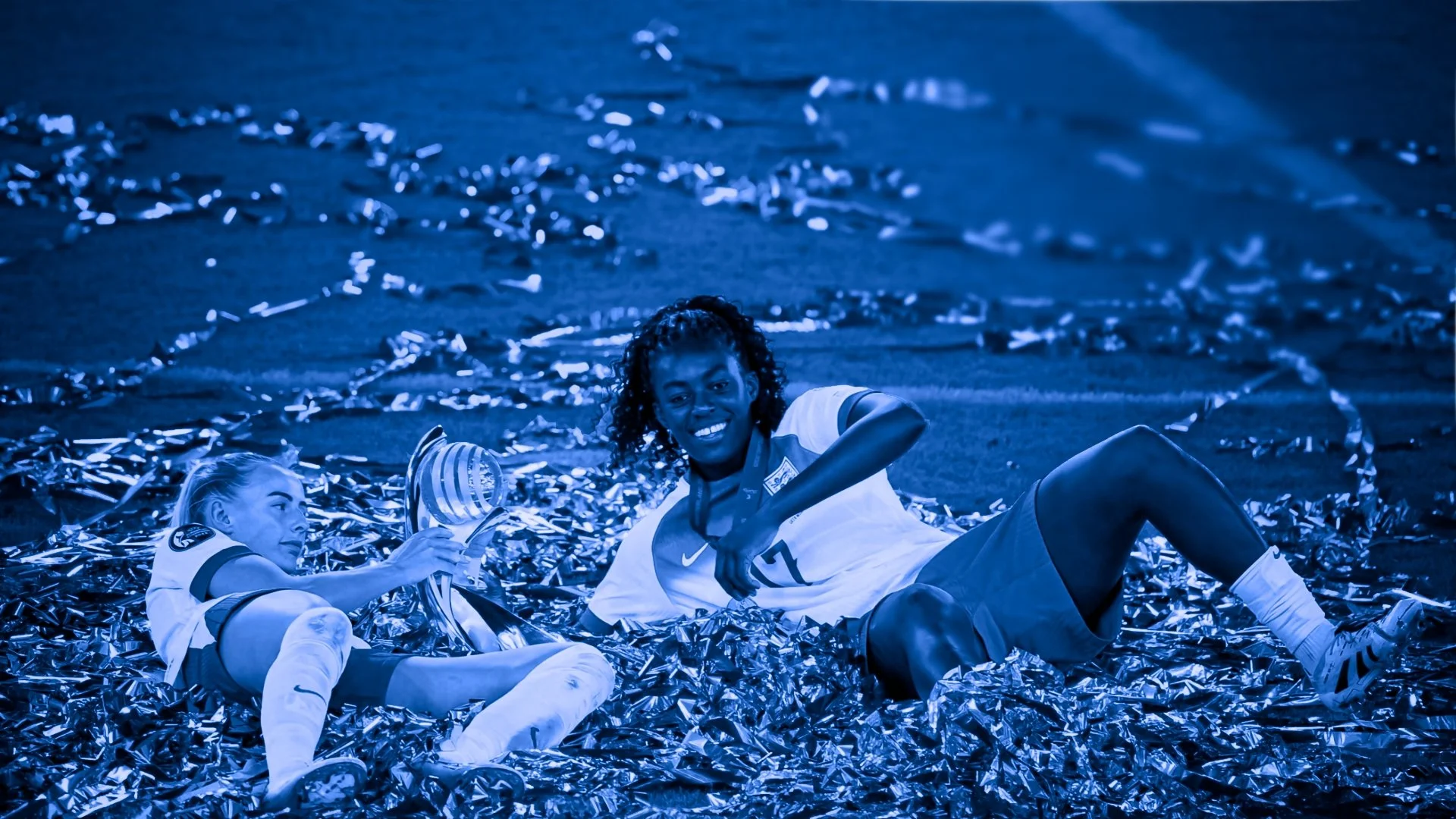How did it take 100 years for women’s football to get here?
“No-one’s interested in women’s football”
It was a throwaway comment from a long-forgotten newsroom meeting, one that popped into my head in 2023, as I joined 50,000 people packing out a stadium in Brisbane to see England’s women very narrowly defeat Nigeria at the World Cup.
England would lose to Spain in the final — a result that was reversed two years later as the Lionesses successfully defended the European championship they won in 2022.
More than 16-million people watched the final in the UK — comfortably the biggest TV moment of 2025 so far.
Ignored for decades, finally newsrooms realise the women’s game can sell newspapers..
No-one’s interested in women’s football? As I set my alarm for 1.45am to make sure I didn’t miss the final from the other side of the world, I wondered how anyone could get it so ludicrously wrong.
“Let’s tell them it matters”
That comment came in 2019, at a meeting a few hours before England took on the USA in the World Cup semi-final. For fifteen minutes we’d discussed a range of middle-ranking stories, trying to identify one capable of becoming a semi-convincing lead.
“If we were a few hours from kick-off in an England men’s World Cup semi-final,” I suggested, “we wouldn’t have considered these stories, because we would have spent more than half our time talking up the match.”
Colleagues were convinced I had lost my mind. Leading the news on a women’s football match would alienate half our audience. People simply didn’t care about it. Sure, it could be the top sports story, safely isolated at the tail end of the programme, but lead the news — the idea was ridiculous.
In the end, we did lead on the World Cup that night — in part because the alternatives were so weak — and a few hours later around 11-million people watched the match on the BBC. Slowly, very slowly, the women’s game was winning the attention it had been denied for so long.
“Quite unsuitable for women”
The British Ladies’ Football Club was one of the first prominent women’s teams, playing their first match at the Crouch End Athletic Ground in north London in 1895. But the first real powerhouse of women’s football was the Dick, Kerr Ladies team of my home town, Preston.
All were First World War workers at a factory, raising money for injured servicemen by playing in front of huge crowds.
After the war they drew 53,000 spectators on Boxing Day 1920, became the first team to play an international women’s match, the first to go on an overseas tour, taking on men’s teams in the United States.
Lily Parr, the first superstar of women’s football.
The star player of the Dick, Kerr Ladies’ side was Lily Parr. Scorer of more than 900 goals, she once took a penalty with such ferocity she broke a man’s arm. Parr was the first woman inducted into the National Football Museum’s Hall of Fame.
My grandmother was obsessed with football. She worked at the same Dick, Kerr factory during the Second World War, and watched the legendary Tom Finney play for Preston North End. But by then, women’s football had been banned by the FA, who in 1921 ruled it “quite unsuitable.”.
The ban stood for fifty years, but decades after it was lifted the women’s game was largely ignored by a media that would clear the decks if David Beckham or Wayne Rooney bruised a toe.
Occasionally, the disparity was highlighted. In 1995, The Times said England’s women “deserve all the support they can get,” praising “as enthusiastic and committed a bunch of athletes as one will find.”
Women were playing football around the world, but the people who could help build the sport simply ignored it. How will people find you, be excited by your skills and your passion, if they’re never even told you’re there?
“You should care about this”
Slowly, things improved. England’s women finally made it onto BBC One during the 2015 World Cup, attracted big TV audiences four years later, and after their win at the 2022 Euros finally became the respected, bankable stars they always could have been.
Prior to 2022, some of England’s best women players were still earning as little as £20,000 a year. Now, six-figure salaries are common, on top of brand partnerships and sponsorship deals.
But why did it take so long? Why could broadcasters, starved of live sport as pay TV came to dominate, not see the potential goldmine in front of them?
It brings me back to that meeting, and the idea that people weren’t interested in women’s football. If true, it was our fault. We hardly ever mentioned it, and if we did it was treated as an amusing curio.
Newspapers, television and radio lack the dominance they once had. But they still help to shape the national conversation, define the narrative, tell us what matters, and crucially what doesn’t.
The most powerful choice journalists frequently make is to exclude a story, to deny it an audience. We have always been gatekeepers, promoting some issues, ignoring others.
We know that, when we give a story top billing, we’re telling audiences “this matters, you should care about this.” If they didn’t care about women’s football, it’s because we never gave them a chance to.
As she retired at the end of the 2023 World Cup, Brazilian legend Marta told reporters “when I started playing, I didn’t have a female idol — you guys didn’t show any female games.”
My grandmother’s love of football never faded. At the age of 90, I took her to Deepdale, past the statue of Finney, as we watched her team one last time.
She died before the women’s game achieved the recognition denied to those pioneers in Preston almost a century earlier. She would have loved every moment of this long-delayed moment in the sun.


